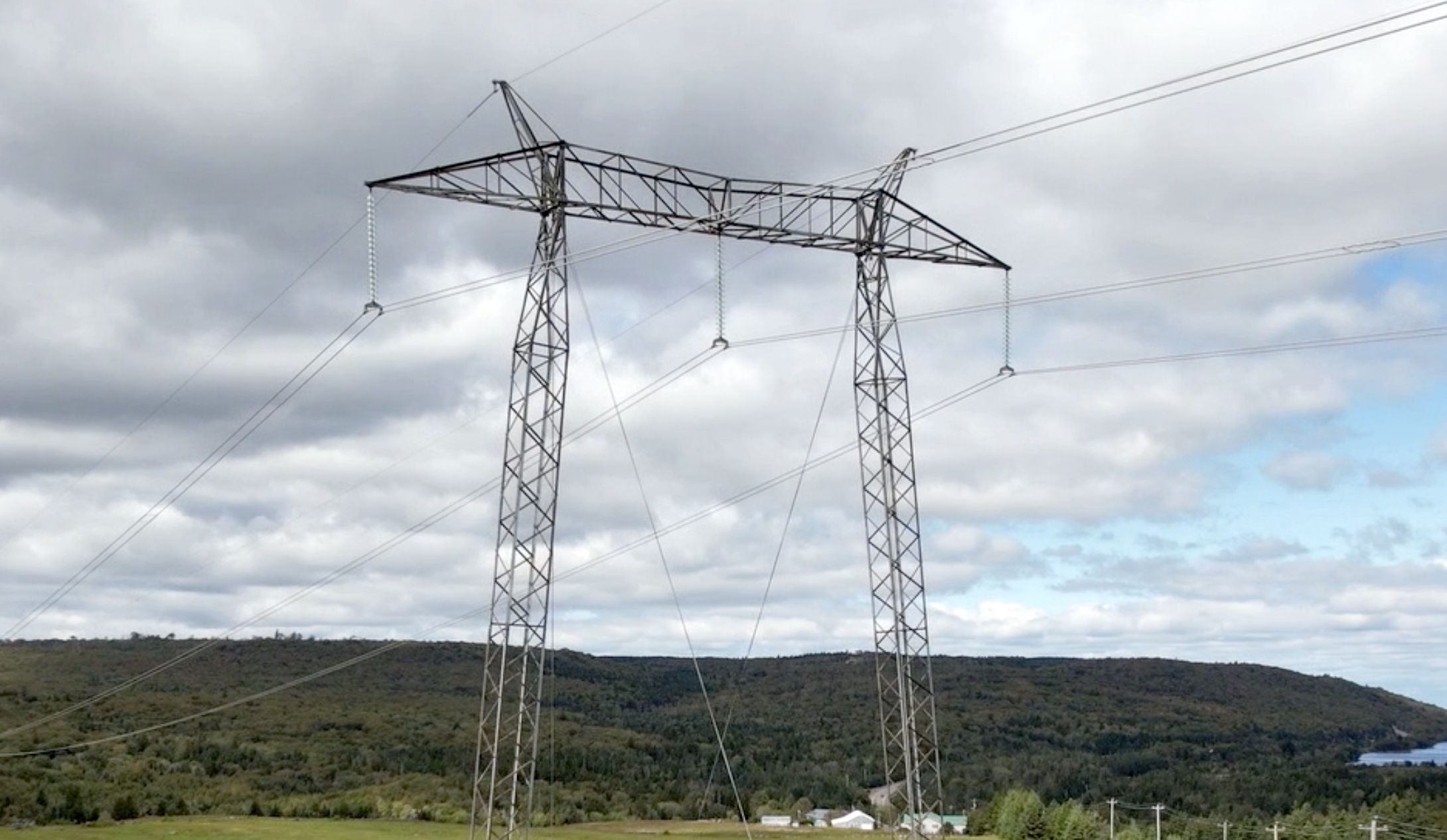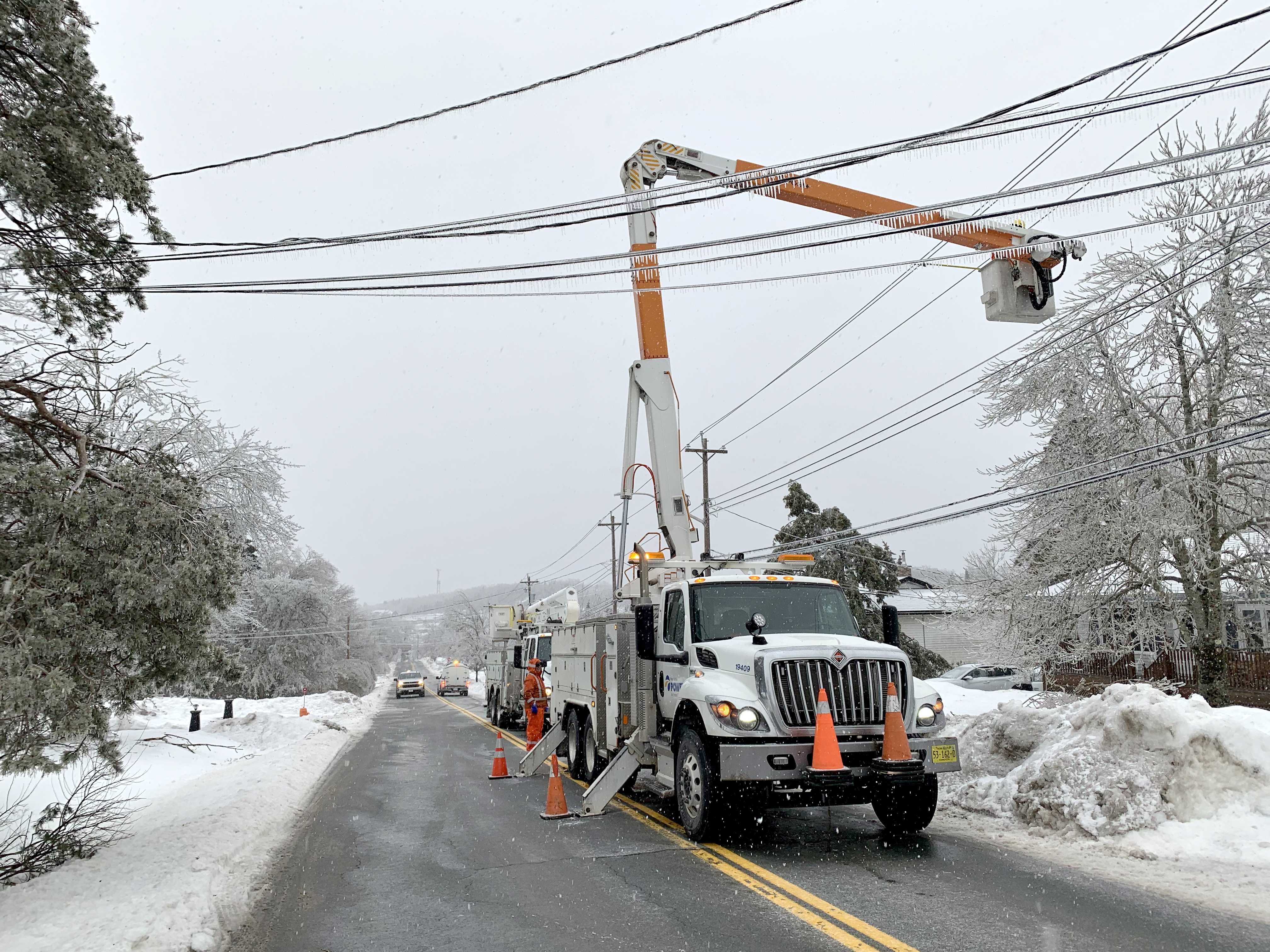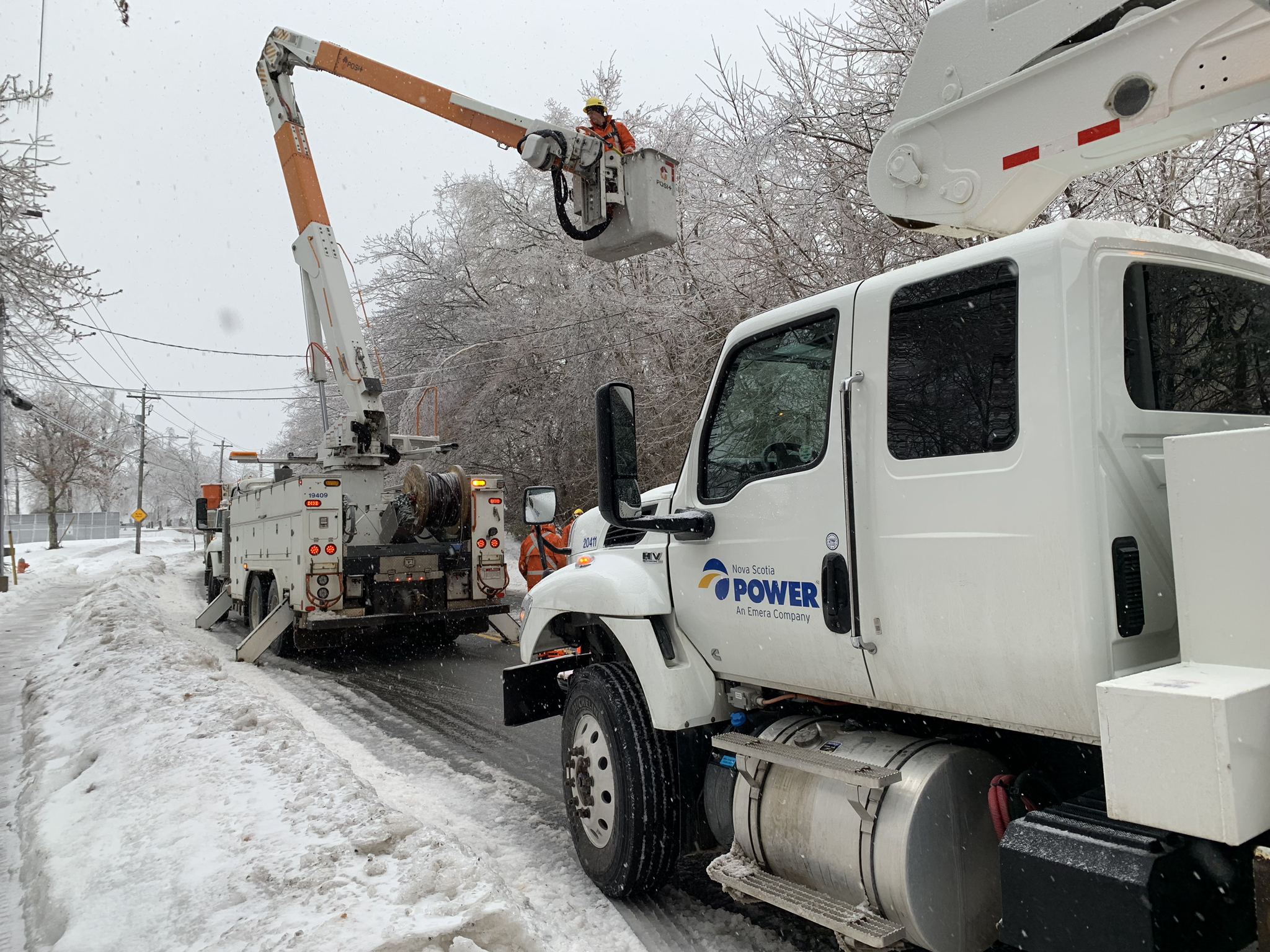You Asked, We Answer: Storm Outages
Trees coming into contact with power lines is the number one cause of outages during storms and the damage from this can vary. It could be a branch or limb laying on a wire, or a full tree pulling lines to the ground or breaking power poles. With nearly 33,000 km of power lines and 500,000 power poles across the province, this damage can happen just about anywhere—in highly visible locations or deep in the woods. This can affect restoration efforts by slowing access to those impacted areas and making the repairs needed to restore power more challenging. Sometimes being out of sight makes it hard to understand what work is actually being done to get the lights back on. We asked our Storm Lead, Jill Searle, to answer some of the most common questions related to power outages.
Why don’t we immediately see crews in our area when our power is out?
It can be frustrating if you’re waiting for your power to be restored and you’re not seeing any Nova Scotia Power trucks and crews working in your area. Or you may see one of our trucks drive by, but your power still isn’t on. Often times, the outage affecting you is actually in a different area, a distance away. Or, after a large storm like Hurricane Fiona or Tropical Storm Lee, there could be multiple repairs that need to be made before your power can be restored. For example, we may need to repair the feeder line that supplies your entire community before we can fix a line that supplies your street.
Sometimes during a power outage, my lights come back on, but then go off again. Why is this?
As we are restoring power, our priority is making sure crews and customers are safe. Sometimes, our crews will need to cut power in a specific area to make a repair or re-route the path of the power. This could lead to customers experiencing an outage while this work is done. It’s to ensure a safe connection to the grid.
Why is the power back on for my street, but not at my house?
There could be localized damage that’s only impacting your home. For example, the service wire that goes from the pole on the side of the road to your home could be down or your meter mast (the tube that runs straight up from your electric meter) might be broken. If the meter mast is damaged, you will need a certified electrician to make repairs before we can safely restore power. Please make sure your outage has been reported (through our outage map or by calling 1-877-428-6004) to ensure we know you’re still without power.
A similar situation can happen in your community or neighbourhood. Perhaps your neighbourhood has power, but not your street. Again, this could be localized damage, like a tree on a line in your subdivision, that has caused a fuse to open at the beginning of your street that is only impacting a few of your neighbours. In these cases, crews will first focus on repairs that will restore power to critical services, like hospitals, police, fire, water, and communications, and then on repairs that restore the largest number of customers in the least amount of time. Again, please make sure your outage has been reported to ensure we know you’re still without power.
What are you doing to improve or strengthen the electricity system to prevent outages?
Along with the planning we do ahead of storms, we do proactive upgrades and maintenance throughout the year to strengthen our electricity system. The number one cause of outages during storms is trees coming into contact with our power lines. These upgrades and maintenance work include tree trimming and replacing poles with stronger, more resilient ones. This work is really important as we are seeing higher winds and more extreme weather, more often. For example, the average number of hours of wind gusts over 80 km an hour in the last five years is up 54% from the five years before that. These winds can cause branches and trees to come into contact with the power system causing outages. In 2023, we invested $32 million in tree trimming—that was $7 million more than the year before. And this year, we will be investing nearly $45 million.
Learn more about outages and restoration process here.
Share This Post:





